21 May
lecture series
LESSER-KNOWN IMAGES OF NAVARRESE MEDIEVAL ART
The knowledge of medieval music in Navarre through iconography
D. Enrique Galdeano Aguirreña
Doctor in History of Art
Musical iconography is a relatively recent disciplinewhich, through the study of the instruments represented in both painting and sculpture, approaches the knowledgeof the music and customs of the period of the art to which the images belong.
Navarre has a rich historical and artistic heritage from the medieval period, which means an abundant sourceof information due to the large number of instruments represented.
Through various methods of work, we will learn about the possibilities of the study of musical iconography, applied to knowledgeboth of the instrument and of the performers and their environment, which appear in the carvings and paintings analysed.
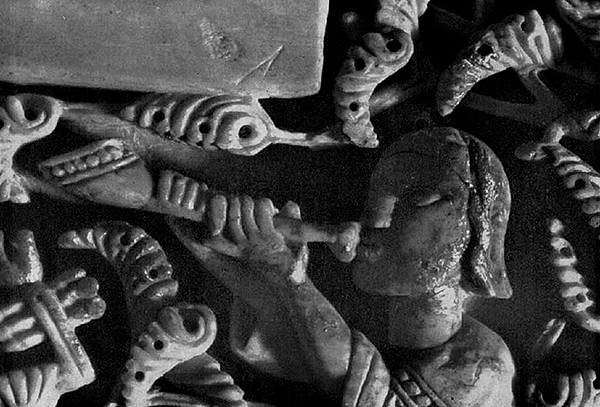
Chest from Leyre. Museum of Navarre
We will see how the musician who appears next to the instrument is also a sourcesource of information, which can provide dataabout the cultural and musical environment in which the instrument is played, and its rustic or cultured character depending on the period and its social acceptance. In this way, the alboka will serve as a guiding thread to learn how an instrument of the Andalusian courts was later relegated to the rural environment of the Christian kingdoms after the appearance of the bagpipes or bagpipes.
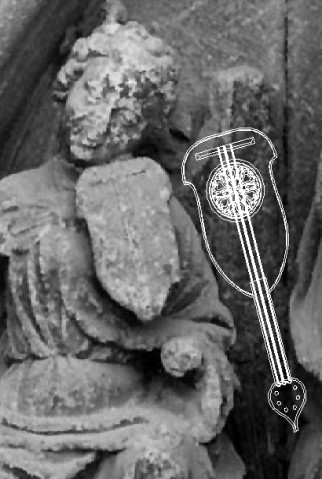
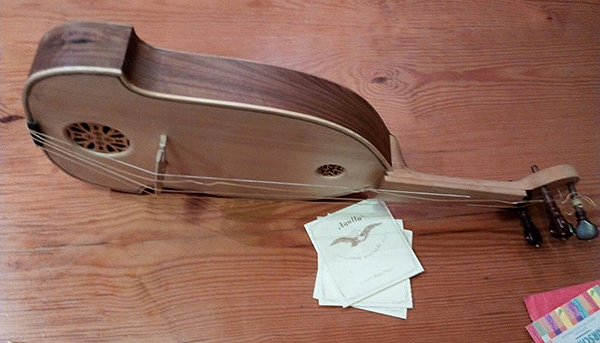
Photo left: filePríncipe de Viana (provided by Alicia Ancho): Saint Joseph's doorway of Pamplona Cathedral.
Photo right: Evaristo Bretos
Another facet of the study of musical iconography will be the knowledgeof the instrument itself, which can be used for its reconstruction through a comparative study with instruments of the period or similar ones preserved in other cultures. workThe viola represented on the façade of San José in Pamplona is a clear example of how a singular instrument due to its evolution and foreign influences can be the starting point for an interesting reconstruction by a luthier, who will start from the dataprovided by the iconographic study.
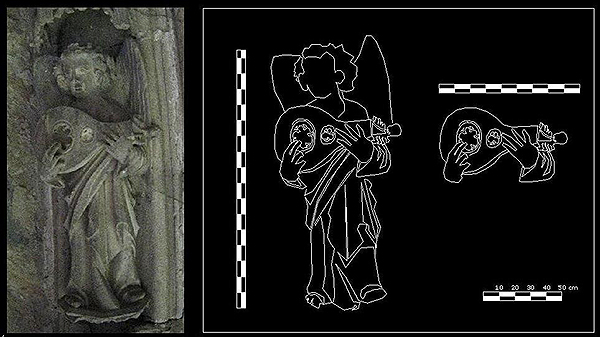
Photo and drawing: Enrique Galdeano: Lute of the Epiphany of Perut from the cloister of Pamplona Cathedral.
The singularities of the instruments found in the musical iconography of Navarre will also allow us to understand the differences in the musical and cultural field with respect to neighbouring kingdoms, where they vary according to the popular roots, foreign influences and the developmentof the music promoted by their courts. The ornanistrum, the rabel and the lute are clear examples of how Navarre was a thriving kingdom in the Gothic period in the field of music, which resulted in more evolved instruments that adapted to the new musical forms. It is in this way that several Navarrese Gothic instruments will mark a patron saintthat will later be established in other Hispanic and European kingdoms, moving away from the Eastern forms with which they were adopted.
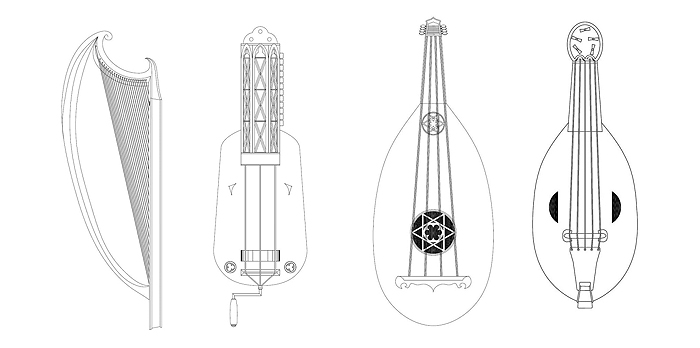
Drawings: Enrique Galdeano (harp, hurdy-gurdy, lute and fiddle)
